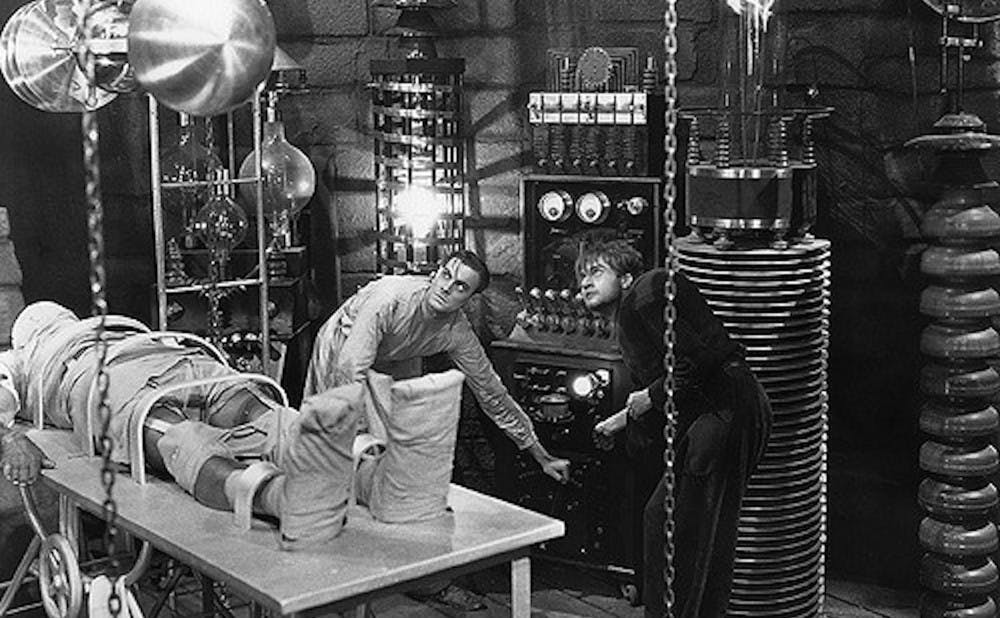Of the overwhelming mass of new books published every year, only few retain their relevance over the decades, and most will slide into oblivion once a change in culture or sentiment has occurred.
It is all the more astonishing, then, that Mary Shelley’s novel “Frankenstein; or, The Modern Prometheus” is as prevalent as ever, even 200 years after its anonymous publication in 1818. To honor Shelley and her work, the Duke English Department has partnered up with its colleagues at UNC and several other institutions to bring “Frankenreads” to campus, an initiative of the Keats-Shelley Association aiming to hold as many marathon-readings as possible on October 31.
On Halloween, volunteers from throughout the university will take turns reading the famously eerie story of an Italian-Swiss scientist creating a humanoid being, only to abandon it after recognizing its uncanny potential. Starting at 9 a.m., each reader will have 10 minutes to present their portion of the novel until all 150 pages have been read out loud.
“One of the strange things about ‘Frankenstein’ is that it’s actually become more and more popular as the culture got closer to the present,” said Robert Mitchell, a professor in the English department whose work on romanticism and science is influenced by Mary Shelley’s novel.
Although its initial reception was only moderately positive, “Frankenstein” now ranks as the most assigned book at the top 30 U.S. universities and has consistently sold more copies than most other Gothic novels.
Many of the questions evoked by Shelley seem more pressing today than they did in the 1800s, Mitchell continued, especially the issue of ethics in science. Frankenstein, who is often mistakenly identified as the monster and not his inventor, takes no responsibility for his creation and leaves it in a foreign world for which it is utterly unprepared. Mitchell added that this dilemma resembles the problems raised by artificial intelligence or cloning that had been purely theoretical in the 19th century, but have become a lot more practical in recent decades.
“The novel is really about a living being, who looks like a human, but seems to have no place in the Europe he is created into,” Mitchell said. This aspect of the novel, he argued, has resonated with many who find themselves marginalized on the basis of their race, sexual orientation or gender. Although potentially unintended, this dimension has been a frequent focus for modern adaptations and has kept heightened interest in the book over time.
Joining Mitchell in this assessment is Ronja Nayeri, a graduate student in the English department who wrote her undergraduate senior thesis on “Penny Dreadful,” one of the many TV shows that feature elements from Mary Shelley’s book.
“No work of fiction could be more relevant than ‘Frankenstein,’” Nayeri said, alluding to the challenges concerning the relations between the human and the non-human. She lauded the novel’s narrative structure and surprising details. In spite of its copious iterations, she said, “You think you know what it’s about, but you don’t.”
“Another dimension we could add to this is the question of migration and refugees, both in Europe and the United States,” Nayeri added. The monster cannot be assimilated into his surroundings, and yet wishes to belong to a society that continuously rebukes him. To resolve this dilemma, he seeks smaller communities, but even these attempts are unsuccessful, resembling the experiences of many migrants who struggle to find their footing in a foreign environment.
In the past 200 years, adaptations of Frankenstein have come in virtually all forms and media. Among these, Robert Mitchell recommended James Whale’s 1931 movie, as well as the more comical “Young Frankenstein” of 1974 and some parts of Kenneth Branagh’s 1994 film. Nayeri, on the other hand, praised the Danny Boyle-directed play starring Benedict Cumberbatch and Johnny Lee Miller. Originally put on by the Royal National Theatre in London, this adaption became particularly well-known, as the two lead actors would alternatingly play the monster or its creator.
The scheduled marathon-reading is not the first event of its kind at Duke. In 2015, the English department and volunteers collectively read John Milton’s masterpiece “Paradise Lost” in about 10 hours; two years later, the Department of Romance studies invited the public to a similar reading of Gabriel García Márquez’s magical realist novel “One Hundred Years of Solitude.”.
Most of the organizational work to bring the reading to Duke was done by Emma Davenport, a graduate student in the English department. She reached out to many potential participants and publicized it on various platforms.
Although many of the 10-minute slots have been filled mostly by faculty and staff, there remain some openings for interested students, who are highly encouraged to participate. Starting at 9 a.m. in Allen 314, the event will surely be a gloomy introduction to a long day of Halloween craziness. Eager students will even have a chance to catch a glance of campus celebrities enjoying literature, as both President Price and Provost Kornbluth plan to take over shifts during the event.
Get The Chronicle straight to your inbox
Signup for our weekly newsletter. Cancel at any time.

